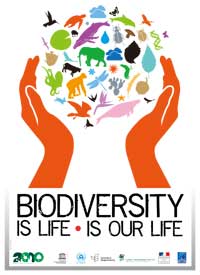IYB Travelling Exhibition

UNESCO, in collaboration with the Secretariat of the Convention on Biological Diversity (CBD), the Global Environment Facility (GEF), the United Nations Environment Programme (UNEP) and Centre Sciences, Orléans - a French resource centre specialized in the production of travelling scientific exhibitions - have joined efforts to create a travelling exhibition to convey the key IYB messages on biodiversity.
The exhibition aims to enhance public awareness of the importance of conserving biodiversity, of the threats to biodiversity and demonstrates how the global community is working to ensure its conservation and sustainable use now and in the future. In particular, the exhibition explores the multiple aspects of biodiversity contributing to human well-being and describes the direct and indirect factors contributing to biodiversity loss. There is special emphasis on the economic aspects of biodiversity and the links between cultural and biological diversity. The exhibit is intended for multiple audiences, including policy- and decision-makers, conservation practitioners, museums and educational institutions. The use of simple language and attractive visual elements contribute to making the exhibition equally accessible to a wider public.
The exhibition, in English and French, organized around 7 themes comprises in total 42 panels with 6 panels per theme. The physical copy of the exhibition will be enhanced throughout the IYB with interactive elements. Exhibitors are invited to display local examples of biodiversity alongside the panels.
Related links


